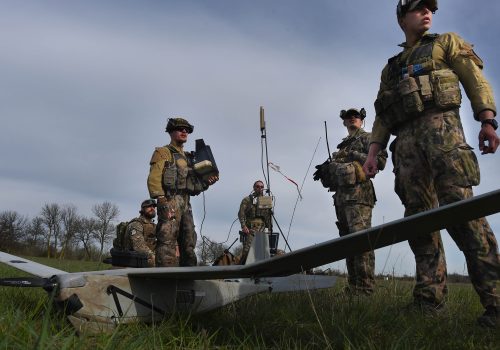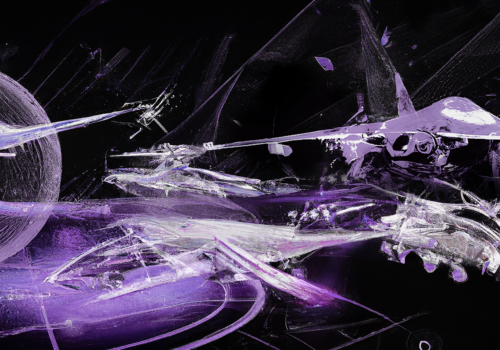Accelerating transatlantic defense innovation in an era of strategic competition
Table of contents
I. Introduction
The North Atlantic Treaty Organization’s (NATO) warfighting edge has traditionally been anchored by the innovation and industrial capacity of the United States, but this will not be sufficient for the transatlantic community to weather today’s military and geopolitical realities. The return of true strategic competition, between nations that believe in the universal value of the free and open liberal international order and those that seek to remake it for their own benefit, has made every element of the international order a contested space—ranging from economics and information to seeking to redraw sovereign territorial borders through force. Strained by the return of industrial warfare on their borders and the need to ensure the security and territorial integrity of partners in the Middle East and Western Pacific, and faced with outdated acquisition systems and supply chains reliant on production in competitor nations, the United States and its NATO partners need new approaches, attitudes, and concepts for technology innovation and industrial production if they are to prevail on future battlefields.
Seen as the solution to every emerging military challenge, the call to innovate has been constant in recent years. Innovation is certainly going to be key to success, and some analysts have even defined the era of strategic competition in terms of an “innovation race.”1Brandon Kirk Williams, “The Innovation Race: US-China Science and Technology Competition and the Quantum Revolution,” Wilson Center, Wilson China Fellowship, and Kissinger Institute, 2023, https://www.wilsoncenter.org/sites/default/files/media/uploads/documents/Williams_2022-23%20Wilson%20China%20Fellowship_Understanding%20China%20Amid%20Change%20and%20Competition.pdf. Too often, however, “innovation” is used as shorthand for “develop a new technology or widget.”
Innovation is as much about process, concepts, implementation, and execution as it is about the technology itself—and it is often in these enabling functions where innovation is needed most to gain significant improvements and advantages.
Society is also going through a transition phase from hardware led to software led, which impacts how we think about technology, its development, and its implementation. This is not new, and is evident across all aspects of modern life. But because the military is more heavily hardware defined than most other sectors, and often more cautious in its evolution, it has greater implications than might be immediately apparent. One key implication is the potential for easier collaboration between allies in capability development. But for this potential to be realized, there will need to be innovation not just in technology, but in the concepts, processes, and,
most importantly, attitudes that allow it to happen.
This is not to claim that hardware is no longer important. Anyone with a passing understanding of artificial intelligence (AI) and the possibilities it portends will also understand how critical the architecture of the silicon chips it runs on is, for instance. But to see how the importance between software and hardware has shifted, take the example of “network centric warfare.”2Edward A. Smith Jr., “Network-Centric Warfare,” Naval War College Review 54, 1 (2001), https://digital-commons.usnwc.edu/cgi/viewcontent.cgi?article=2391&context=nwc-review. The term du jour in the early 2000s, this concept for how war would be fought has been proven right. Yet, most militaries attempted to implement it by forcing every partner military to use the same hardware and “network” systems. More recently, modern Western militaries have begun taking a more data-centric approach, which emphasizes shared data formats rather than shared systems, and has seen a rapid improvement in implementing the concepts network-centric warfare championed.3Joe Lacdan, “Army Intelligence Leader: ‘Cultural Shift’ Will Help Service Become Data Centric,” Army News Service, January 12, 2024, https://www.army.mil/article/272946/army_intelligence_leader_cultural_shift_will_help_service_become_data_centric. The hardware is still important, but the software is the defining element.
If advanced technologies are a key pillar of winning the era of strategic competition, and allies are one of the United States’ great advantages, then surely tech collaboration with allies should be a center of gravity for the US to win. Defending the Euro-Atlantic area, and securing NATO’s advantage across operational domains in a moment of unprecedented strategic competition with near-peer adversaries, will require strengthened defense and technology cooperation between the United States and its allies and industry partners across the Atlantic. To achieve this, the United States will need innovative thinking and approaches—not just for the development of technologies, but for sharing and ultimately co-producing them.
II. Elements of innovation
The concept of innovation can be abstract, and there are few agreed rules or definitions for exactly how it can be achieved. Innovation can have many sources and take many forms, and occurs in every aspect of the human experience. In military terms, it has most often originated during times of conflict and out of necessity. Since the end of the Second World War and the start of the Cold War—a period of incredible innovation—technology development was driven by military and federal funding, and undertaken by a handful of centralized, traditional research organizations with a focus on government and military applications. The internet is the most commonly cited example of Department of Defense (DOD)-funded invention, having started as an Advanced Research Projects Agency project, but examples include the Global Positioning System (GPS), night vision, jet engines, and many others. This innovation was paired with experimentation of concepts and doctrine that often needed to occur in large, remote areas and involved significant infrastructure and forces.
Today, greater innovation is occurring in the commercial sector, led by a handful of technology behemoths and a vast number of decentralized start-ups funded by private capital.“4Commission on Defense Innovation Adoption,” Atlantic Council, last visited March 24, 2024, https://www.atlanticcouncil.org/programs/scowcroft-center-for-strategy-and-security/forward-defense/defense-innovation-adoption-commission/. As technology becomes increasingly software driven, there is greater scope for new entrants and broader collaboration as the development environments are less constrained by geography and infrastructure. Experimentation can happen virtually and through simulation, allowing for more input from a more diverse set of participants. This is critically important, as collaboration and cross-pollination of perspectives and ideas can be powerful drivers of innovation. And while national militaries still have a key role to play in innovation and technology development—for instance, through programs like the Defense Advanced Research Projects Agency (DARPA) and NATO’s Defence Innovation Accelerator for the North Atlantic (DIANA)—many of the most important capabilities are dual use, with the rapid iteration and evolution in the commercial field outpacing those of government-driven programs.
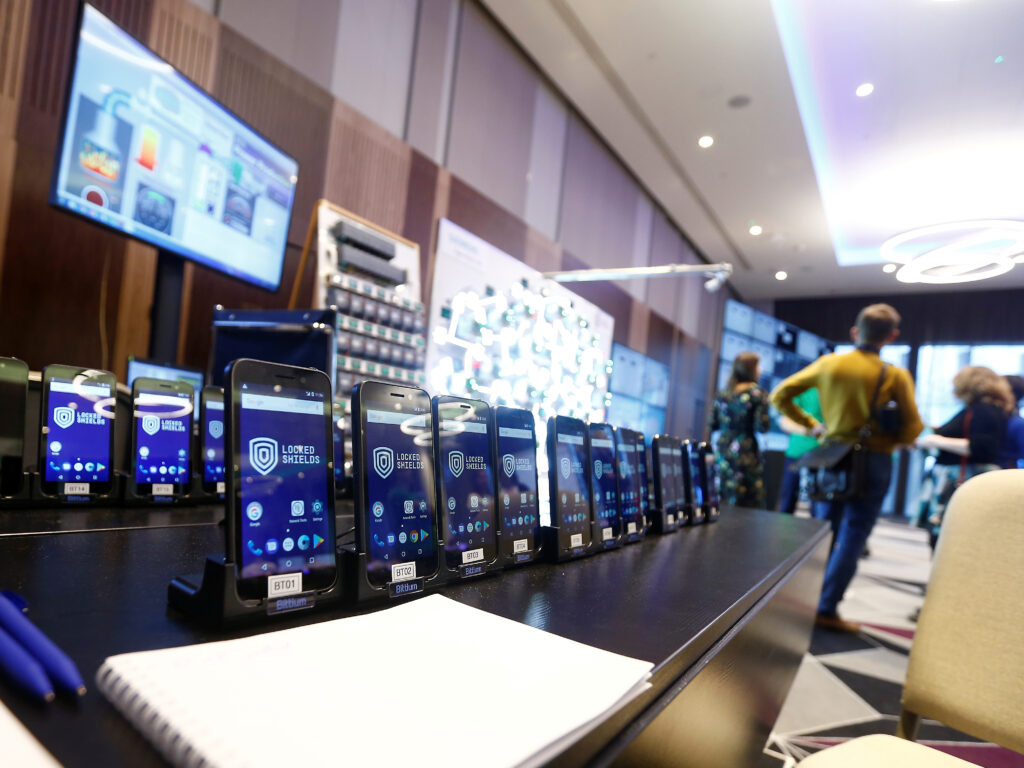
Technology will always play a key role in innovation, as it can enable us to do new things we couldn’t do before or provide new ways to complete existing tasks more efficiently. But innovation does not always require new technologies, and it is not always characterized by a sudden or high-profile shift. Even small improvements, new ways of doing things, or applying existing ideas in new contexts can generate significant innovation. In other cases, new processes or methods that enable something to occur, or encourage greater creativity in execution, can be considered innovative. And in the government sector, where departments of defense and militaries reside, these sometimes boring and arcane improvements can be the most significant.5The shift from hierarchical approaches to giving orders to “mission command”-style leadership is the best example of this; the implementation of “predictive-maintenance” approaches to equipment management is another. Even procurement processes like creating Other Transaction Authorities (OTAs), which allow DOD engagement with nontraditional suppliers for prototype projects. At a more granular and niche level, new processes such as using Significant Security Cooperation Initiatives (SSCI) to globally prioritize security-cooperation activities to create a more coherent approach to military aid can have multiple benefits. The problems and constraints created by the US International Traffic in Arms Regulations (ITAR) are an obvious area where even small changes could have a dramatic impact on cross-border innovation collaboration.6John Schaus and Elizabeth Hoffman, “Is ITAR Working in an Era of Great Power Competition?” Center for Strategic and International Studies, February 24, 2023, https://www.csis.org/analysis/itar-working-era-great-power-competition; Hideki Tomoshige, “The Unintended Impacts of the U.S. Export Control Regime on U.S. Innovation,” Center for Strategic and International Studies, July 25, 2022, https://www.csis.org/blogs/perspectives-innovation/unintended-impacts-us-export-control-regime-us-innovation; Martjin Rasser, “Rethinking Export Controls: Unintended Consequences and the New Technological Landscape,” Center for a New American Security, December 8, 2020, https://www.cnas.org/publications/reports/rethinking-export-controls-unintended-consequences-and-the-new-technological-landscape; John T. Watts, “Evolving Cooperative Security Approaches for Tomorrow’s Realities,” Atlantic Council, December 20, 2023, https://www.atlanticcouncil.org/in-depth-research-reports/report/evolving-cooperative-security-approaches-for-tomorrows-realities/. An adaptation in attitude and mindset can be the most crucial, if it means that a new approach can be adopted where it would not previously have been.
Therefore, innovation can be defined as the successful implementation of new ideas, methods, or products that create value. It involves challenging the status quo, thinking creatively, and taking calculated risks to achieve positive outcomes. Fresh perspectives and unconventional thinking foster innovation by questioning existing assumptions and approaches. These new concepts can disrupt traditional methods and spark the creation of entirely new fields of study or application, in part by fusing seemingly unrelated fields. This is where open societies have an advantage, as they embrace diversity of experience and perspective. Leveraging niche expertise and many different cultural, geopolitical, educational, and experiential perspectives that exist within the United States’ robust network opens new opportunities. Closer cooperation across design, experimentation, and implementation of cutting-edge technologies and approaches help the United States not only strengthen connectivity with allies and industry partners, but share the burden of innovation investment while gaining insights and capabilities for its own forces.
Deeper transatlantic defense cooperation has the potential to unlock new advantages needed to ensure the United States and its allies retain their strategic edge over near-peer adversaries in a future conflict. But cashing in on these opportunities requires an understanding of the forms innovation takes, what is needed to best harness them, and a willingness within the traditional US defense establishment to reform procurement, contracting, and data-sharing mechanisms in ways that make it easier for trusted allies and industry partners to do business with the United States.7Joslyn Brodfuehrer, “NATO’s Greatest Advantage over Adversaries Is Its Network of Allies and Industry Partners. Here’s How to Use It,” Atlantic Council, October 27, 2023, https://www.atlanticcouncil.org/blogs/new-atlanticist/natos-greatest-advantage-over-adversaries-is-its-network-of-allies-and-industry-partners-heres-how-to-use-it/.
Broadly, we can think of the forms of innovation as new concepts, new technologies, and new attitudes. New technologies become the tools to implement fresh concepts brought to life by a shift in attitudes. Fostering innovation requires more than just the latest technology. It necessitates a culture that embraces new ideas, encourages experimentation, and fosters collaboration—allowing all three ingredients to work together in a powerful synergy, shaping a more innovative and progressive future.
III. New concepts: Innovation in adoption and adaption
Experimentation is a vital component of innovation, and forces in active combat will always seek new ways to gain an advantage over enemy combatants. Their lives depend on it.
It is not surprising that we have seen a wide range of innovations emerge from brave Ukrainians defending themselves in the face of Russia’s war of aggression. As this is the first conventional conflict between two modern militaries in decades, there will be many attempts to extrapolate insights about the nature of modern and future warfare from successful technologies and tactics, techniques, and procedures (TTPs) implemented in Ukraine. But while the obvious lessons to learn might come from the extensive use of small commercial drones for precision strikes, this has been occurring at a smaller scale in Middle East since at least 2017, and is not particularly new or radical.8Joby Warrick, “Use of Weaponized Drones by ISIS Spurs Terrorism Fears,” Washington Post, February 21, 2017, https://www.washingtonpost.com/world/national-security/use-of-weaponized-drones-by-isis-spurs-terrorism-fears/2017/02/21/9d83d51e-f382-11e6-8d72-263470bf0401_story.html. What the Ukrainians have done, with great success, is integrate this drone capability effectively into combined-arms operations, and with the scale, sophistication, and diversity of platform capable of changing the nature of the battlespace.“9How Cheap Drones Are Transforming Warfare in Ukraine,” Economist, February 5, 2024, https://www.economist.com/interactive/science-and-technology/2024/02/05/cheap-racing-drones-offer-precision-warfare-at-scale; Laura Jones, “Lesson from a Year at War: In Contrast to the Russians, Ukrainians Master a Mix of High- and Low-End Technology on the Battlefield,” Conversation, February 22, 2023, https://theconversation.com/lesson-from-a-year-at-war-in-contrast-to-the-russians-ukrainians-master-a-mix-of-high-and-low-end-technology-on-the-battlefield-197853
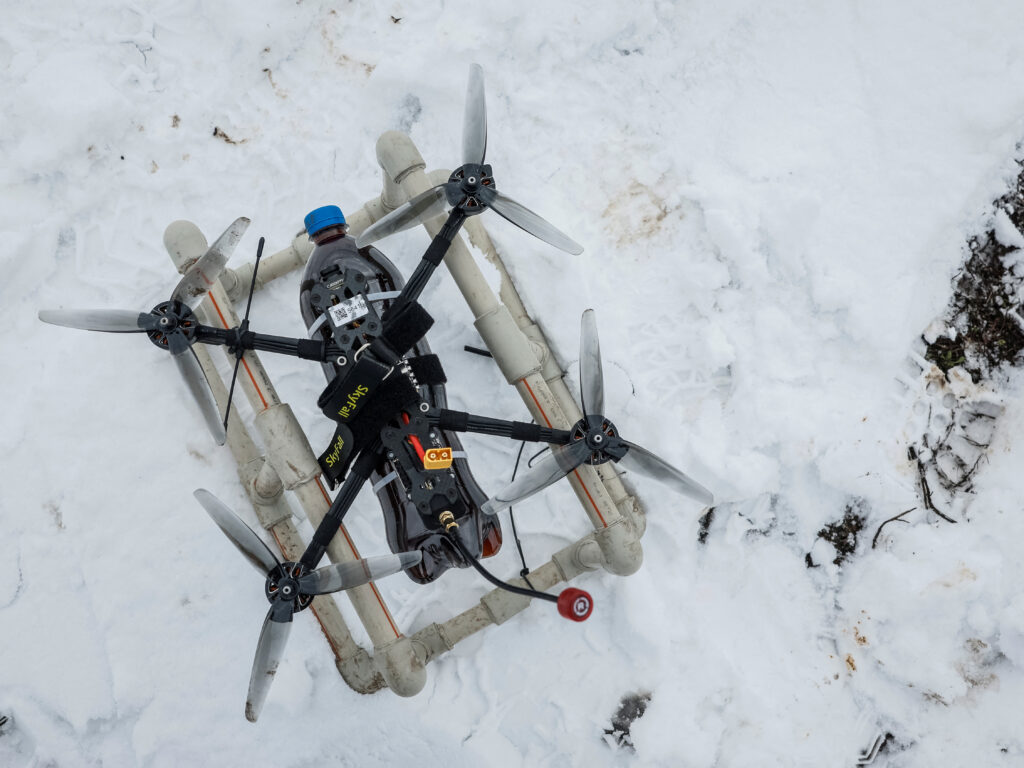
The more interesting lesson to learn, however, is the way Ukraine has leveraged the drones to amplify their effect through domestically created software. For years, analysts have predicted a transition from hardware-focused warfare to a software-defined ecosystem, mirroring similar transitions in civilian and commercial sectors. In the West, there is a slow process of moving from system- and platform-centric reference architectures for military systems to software products that enable larger platforms. Companies like Anduril and Palantir are transforming the traditional procurement pathways, but this will be a slow and iterative process. Ukraine is showing how it can be accelerated.10Aaron Mehta, “Palantir Wins Contract for Army TITAN Next-Gen Targeting System,” Breaking Defense, March 6, 2024, https://breakingdefense.com/2024/03/palantir-wins-contract-for-army-titan-next-gen-targeting-system/; Christine H. Fox and Akash Jain, “Prime Time for Software: Reimagining the Future of Defense Acquisition,” War on the Rocks, April 17, 2023, https://warontherocks.com/2023/04/prime-time-for-software-reimagining-the-future-of-defense-acquisition/.
Local software developers have created their own software solutions, like the Kropyva artillery targeting and blue-force tracking combat-control app; Delta, a cloud-based, comprehensive situational-awareness and battlefield-management system; and a chatbot, often integrated into the widely used Diia app, to crowdsource intelligence from the general population about enemy movements and military capabilities.11Tom Cooper, “Kropyva: Ukrainian Artillery Application,” Medium, June 10, 2022, https://medium.com/@x_TomCooper_x/kropyva-ukrainian-artillery-application-e5c6161b6c0a; “Digital Country,” UkraineNow, last visited March 24, 2024, https://ukraine.ua/invest-trade/digitalization/.
The development and deployment of these software-enabled capabilities share several key characteristics. They often include aspects of private-public partnership; integrate elements of crowdsourcing and support from the wider populations; automate key features; and mimic more sophisticated commercial services. Moreover, one of their key contributions is the ability to modernize and integrate old and outdated equipment with more modern systems and tactics, such as Ukraine’s legacy, Soviet-originated anti-aircraft systems.12David Axe, “There’s a Good Reason the Russian Air Force Is Faltering. Ukrainian Air-Defense Crews Have Better Apps,” Forbes, October 18, 2022, https://www.forbes.com/sites/davidaxe/2022/10/18/theres-a-good-reason-the-russian-air-force-is-faltering-ukrainian-air-defense-crews-have-better-apps/?sh=44232a007960.
There are wider lessons to be learned from the development and deployment of such systems. A country facing an existential threat has an inherently different risk profile than a country in a state of peace, and a smaller nation will usually have less bureaucracy than a larger one. Nonetheless, private-public collaboration and the ability and willingness to quickly adapt, along with more flexible and streamlined procurement processes, show what can be possible. Moreover, this demonstrates how software can overcome the limitations of hardware—particularly dated, legacy systems—which will be vital as the United States seeks to modernize the forces of allies and partners around the world as efficiently as possible. The benefit cannot be understated. While all allies and partners strengthen the strategic value of the network, many may struggle to meaningfully contribute in a high-end contingency due to the capabilities of their legacy systems. Leveraging the expertise Ukraine has built in creating and effectively utilizing an ecosystem of partner security cooperation increases the second- and third-order value of past US security-cooperation investments, while increasing the deterrent value of its core strategic asset and increasing stability and security for all.
IV. New technologies: Exported concepts to returned capabilities
Alliances provide unique opportunities for innovation through the exportation and application of concepts—opening new doors for innovation in response to countries’ unique geopolitical needs and circumstances, with multiplying effects for others in the network. Australia’s Ghost Bat program is a fascinating example of this type of innovation across the alliance ecosystem. Boeing’s MQ-28 Ghost Bat is “a pathfinder for the integration of autonomous systems and artificial intelligence to create smart human-machine teams” that resulted from collaboration between the Australian Air Force and Boeing.13“Ghost Bat,” Australian Air Force, last visited March 24, 2024, https://www.airforce.gov.au/our-work/projects-and-programs/ghost-bat#:~:text=The%20Ghost%20Bat%20uncrewed%20aircraft,Air%20Force%20and%20Boeing%20Australia. The Ghost Bat represents a new way of conducting air-combat operations, in which human-flown aircraft like the F-35 will be able to seamlessly coordinate and cooperate with autonomous systems, in a concept known as the “loyal wingman.”14Daniel Wassmuth and Dave Blair, “Loyal Wingman, Flocking, and Swarming: New Models of Distributed Airpower,” War on the Rocks, February 21, 2018, https://warontherocks.com/2018/02/loyal-wingman-flocking-swarming-new-models-distributed-airpower/.
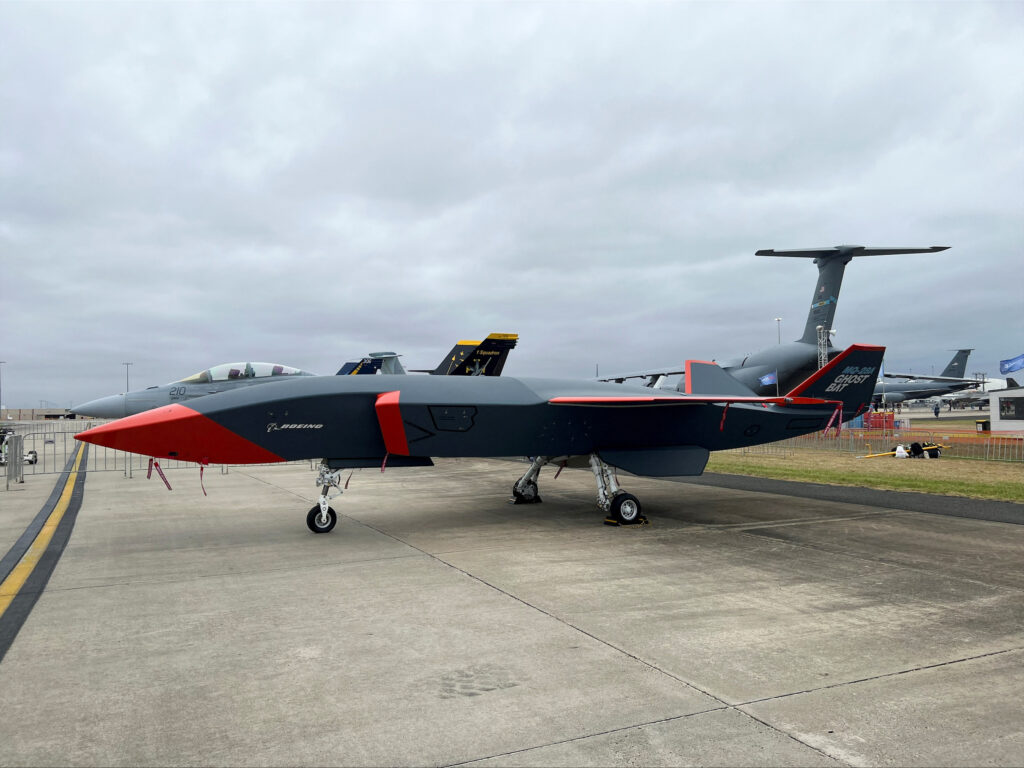
The design of the Ghost Bat was so successful that it has been expanded by $250 million to build a Block 2 version, spawned an underwater unmanned-vehicle program called the Ghost Shark, and is now being exported to the United States for testing.15Colin Clark, “Aussies Add $400M AUD for Boeing’s Ghost Bat Loyal Wingman, to Unveil an Armed UAV This Year,” Breaking Defense, February 8, 2024, https://breakingdefense.com/2024/02/aussies-add-400m-aud-for-boeings-ghost-bat-loyal-wingman-to-unveil-an-armed-uav-this-year/; Tim Fish, “Anduril’s Extra-Large UUV Ghost Shark Edges Closer to Production in Australia,” Shephard, November 10, 2023, https://www.shephardmedia.com/news/uv-online/anduril-keen-to-move-into-uuv-production/; Michael Marrow, “Boeing’s Ghost Bat Loyal Wingman Drone Spotted Hanging in US,” Breaking Defense, May 25, 2023, https://breakingdefense.com/2023/05/boeings-ghost-bat-loyal-wingman-drone-spotted-hanging-in-us/. What is more interesting is that the collaboration involves a US allied government, is led by a US defense manufacturer, and manifests a US-developed concept that, despite several conceptual iterations, is yet to be fully developed in the United States itself.16Joseph Trevithick, “XQ-58 Valkyrie Solves Air Combat ‘Challenge Problem’ While under AI Control,” Warzone, August 3, 2023, https://www.twz.com/xq-58-valkyrie-solves-air-combat-challenge-problem-while-under-ai-control.
A simplistic analysis of this case study could point to streamlined procurement processes and reduced bureaucracy in non-US governments, but this is not necessarily the case. The more useful framing for thinking about such a program is that every nation has a unique set of national circumstances—from geography and economy to national objectives and military approaches. As such, there will be varying requirements and incentives for military designs and programmatic commitments.
Rather than seeking to cover all possibilities, or even to replicate others’ experiences, streamlining the ability to leverage that experience and context to flow concepts, manufacturing, and techniques back and forth between nations means the United States can benefit from the diversity of its vast partner network, while sharing the burden of development costs.
It is the flow of concepts, skills, technology, and prototypes between partners in complex innovation ecosystems that reveals the possibilities for operationalizing ideas to capabilities. And while Ukraine demonstrates that makeshift and improvised solutions in real-time combat can provide paths to innovation, the Ghost Bat program was a long-term, planned procurement process, in which an ally’s pursuit of capabilities to meet its own needs (in Australia’s case, the need to amplify the effect of a small population across vast territory through high-end technology and capabilities) offers an opportunity to advance solutions the United States can leverage to achieve its own capabilities goals.
Partnerships such as the US National Technological and Industrial Base (NTIB) and AUKUS trilateral defense partnership have created vehicles for cooperation between the United States and some of its closest historical allies—which can drive collaboration like the Ghost Bat program. The NTIB, for example, supports security and defense objectives by “supplying military operations; conducting advanced R&D and systems development to ensure technological superiority of the US Armed Forces; securing reliable sources of critical materials; and developing industrial preparedness to support operations in wartime or during a national emergency.” 17H. M. Peter, “The National Technology and Industrial Base,” FAS Project on Government Secrecy, 2023, https://sgp.fas.org/crs/natsec/IF11311.pdf While effective, the NTIB and AUKUS only tap into a small subset of countries, excluding the advanced capabilities, platforms, and expertise spread across the United States’ twenty-nine other NATO allies. Bringing new partners into the US orbit via an AUKUS+ framework—or extending the NTIB to other close transatlantic allies with cutting-edge expertise and capabilities, like Sweden, Italy, and the Netherlands—would open new acquisition pathways and facilitate the enhanced cooperative development, experimentation, and industrial co-production needed for the United States to outpace competitors in today’s threat environment.18William Greenwalt, “Leveraging the National Technology Industrial Base to Address Great-Power Competition,” Atlantic Council, April 23, 2019, https://www.atlanticcouncil.org/in-depth-research-reports/report/leveraging-the-national-technology-industrial-base-to-address-great-power-competition/; Brodfuehrer, “NATO’s Greatest Advantage over Adversaries Is Its Network of Allies and Industry Partners.” Agreements like AUKUS should not be seen as ends in themselves, but pathfinders to create new and more streamlined channels for tech collaboration and cooperation.
V. New attitudes: Niche innovations
Another way to leverage allied innovation is through adapting and adopting niche capabilities that allies have naturally developed to meet their own needs, built on the native talents and expertise of their own populations. Some of the easiest and most critical of these tools are in the cyber and information domains, though across allied countries in NATO, for instance, there are numerous small drone, satellite communications, and ballistic-missile technologies that could be highly useful across the US-aligned alliance ecosystem. For instance, countries such as Estonia and the Netherlands are at the forefront in areas such as misinformation detection, cyber-threat intelligence, network security, and incident response. Co-production will also be vital for NATO to meet the challenges of this era of renewed strategic competition, and the value of it—particularly in niche advanced capabilities—can be seen through the ramping up of production for items such as first-person view (FPV) drones in support of Ukraine’s defense.19Sam Skove, “UK, Latvia Launch Effort to Send Thousands of FPV Drones to Ukraine,” Defense One, February 15, 2024, https://www.defenseone.com/threats/2024/02/uk-latvia-launch-effort-send-thousands-fpv-drones-ukraine/394238/.
The value of leveraging native conditions that can be leveraged by the wider alliance can be seen in countries like the Netherlands, where a high concentration of high-tech companies, knowledge economies, and widespread public-private collaborations has resulted in niche capabilities in ballistic-missile defense, sensor systems, and space, communications, and quantum technologies.20Brodfuehrer, “NATO’s Greatest Advantage over Adversaries Is Its Network of Allies and Industry Partners.” Its innovation hub at Brainport Eindhoven now also hosts a NATO DIANA accelerator cell to further leverage its successful investments and public-private collaborations, and its success in areas such as the launching of micro satellites has drawn attention from potential adversaries.21“Brainport Region First in the Netherlands to Join NATO’s DIANA Innovation Accelerator,” Brainport Eindhoven, March 14, 2024, https://brainporteindhoven.com/int/news/brainport-region-first-in-the-netherlands-to-join-natos-diana-innovation-accelerator; “China Seeking Dutch Space Technology—Military Intelligence Agency,” Reuters, April 19, 2023, https://www.reuters.com/technology/space-seeking-dutch-space-technology-military-intelligence-agency-2023-04-19/. More importantly, they are proactive in seeking to collaborate and disseminate natively developed insights, showing how important the attitude toward innovation must come from both sides of any collaboration.22“Dutch Space Sector Strengthens Position in the United States,” Space Foundation, April 17, 2023, https://www.spacefoundation.org/2023/04/18/dutch-space-sector-strengthens-position-in-the-united-states/.
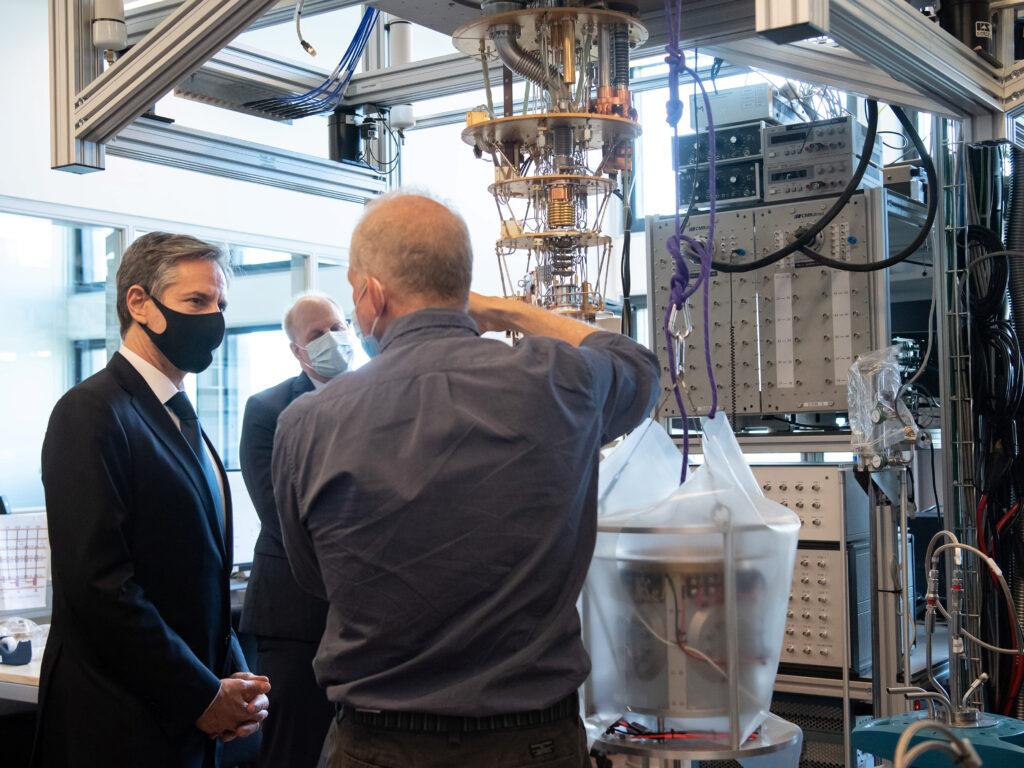
In many cases, knowledge-based innovation should be easy to export and share. But it cannot occur without recognition of the expertise of the source country and a genuine desire to learn from and adopt the lessons being generated. This requires a shift in attitude toward the value of the innovation itself, and a willingness to learn from others’ experiences. At a more basic level, it requires appropriate information-sharing agreements to be in place, which also requires a degree of trust between parties and a dedication to reforming the bureaucratic processes needed to enable them. While initiatives like the NTIB have arguably failed to live up to their potential, their value in shaping attitudes and focusing attention on the need for collaboration and sharing of data and technologies could be as valuable as any other element.23“Ebbing Opportunity: Australia and the US National Technology and Industrial Base,” United States Studies Centre, November 25, 2019, https://www.ussc.edu.au/australia-and-the-us-national-technology-and-industrial-base. For this reason alone, the United States should consider expanding the effort to more NATO nations, with the future intent of also bringing them into an expanded AUKUS+ framework.24Caitlin M. Kenney, “US Open to Expanding AUKUS,” Defense One, June 26, 2023, https://www.defenseone.com/policy/2023/06/us-open-expanding-aukus/387948/. Agreements of this type are a perfect example of the process innovation needed in addition to the development of technologies, because without process and regulatory reform—not to mention increased data sharing—and the attitude required to enable it, technological collaboration will not be able to occur in a meaningful way.
Successful innovation requires a shift in attitude across a number of issues, including willingness to experiment, increased risk appetite, open-mindedness, and an embracing of inevitable failures as a path to learning. But the need to recognize the value of diverse perspectives on addressing challenges—and have the willingness to enable the sharing of those perspectives and the data that support them—is vital to exploring untrodden paths and fostering a culture of continuous improvement. There are likely few across the US agencies, military, or defense industrial base who would disagree in principle. But for this attitude to have a material effect, there must be a shift from passive agreement to proactive measures to enable it.
VI. Conclusion
If advanced technologies are a key pillar of winning the era of strategic competition, and allies are one of the United States’ great advantages, then surely tech collaboration with allies should be a center of gravity of US means to win. In a race of innovation, harnessing the perspectives, experiences, and extant investment of a diverse network of partners is a huge strategic advantage for the United States and NATO. But it will be a squandered advantage if appropriate attitudes, concepts, and processes are not in place to amplify development and harness the resulting capabilities. There are already a number of programs that seek to do this, and they should be supported, studied, and replicated. But more should be done to harness the new concepts, technologies, and niche capabilities that the partner ecosystem is generating, particularly within NATO member states—either through expansion of programs such as the NTIB, AUKUS, and DIANA, or by using them as templates to reform and evolve other bilateral and multilateral frameworks. Doing so will be imperative if the transatlantic Alliance is not only to prevail in this era of strategic competition, but retain sufficient military advantage needed to ensure security and stability for a free and open international system.
About the author
Acknowledgement and disclaimer
This publication has been produced in cooperation with the Ministry of Defence of the Kingdom of the Netherlands under the auspices of a project on transatlantic defense innovation.
Related content

The Transatlantic Security Initiative, in the Scowcroft Center for Strategy and Security, shapes and influences the debate on the greatest security challenges facing the North Atlantic Alliance and its key partners.
Image: A first-person view (FPV) drone is seen at a training location of the "Achilles" Attack Drone Battalion of the 92nd Separate Assault Brigade of the Ukrainian Armed Forces, amid Russia's attack on Ukraine, at an undisclosed location in Donetsk region, Ukraine February 6, 2024. REUTERS/Alina Smutko


